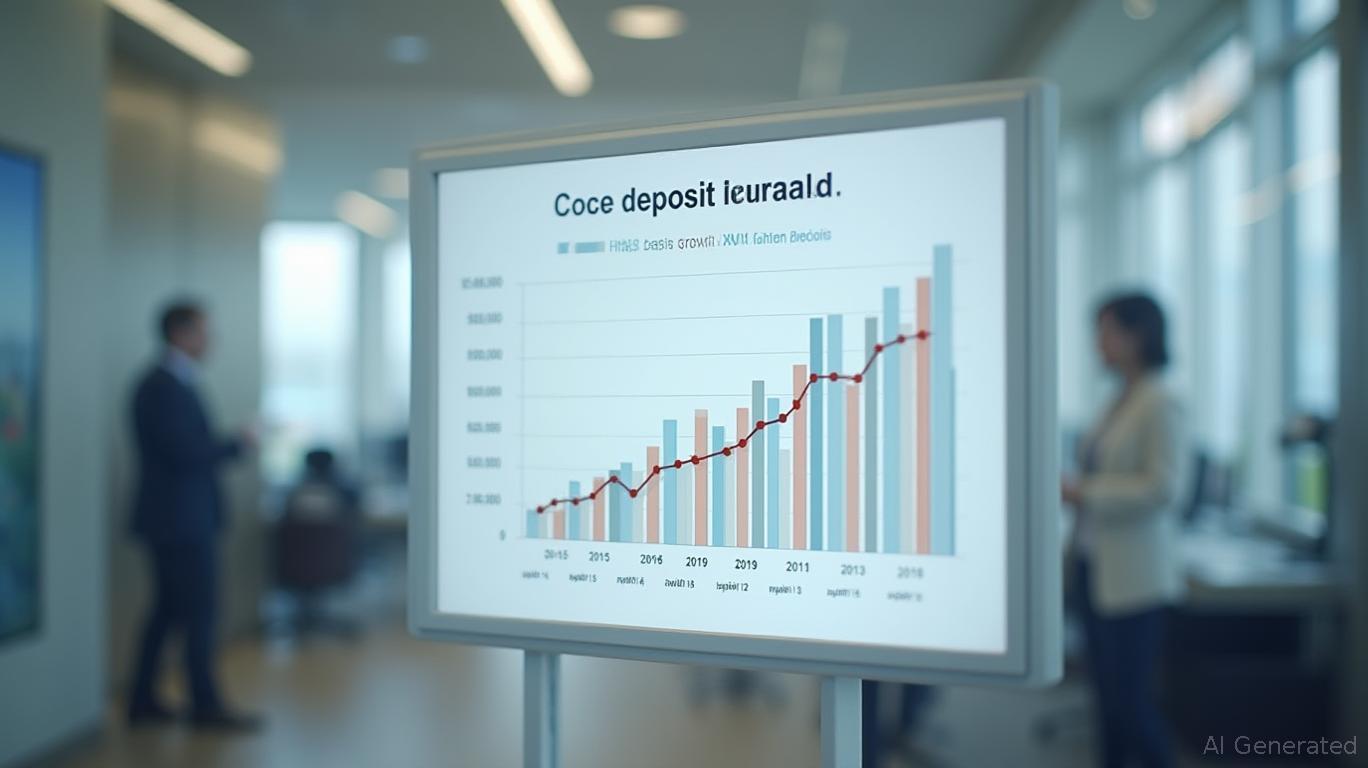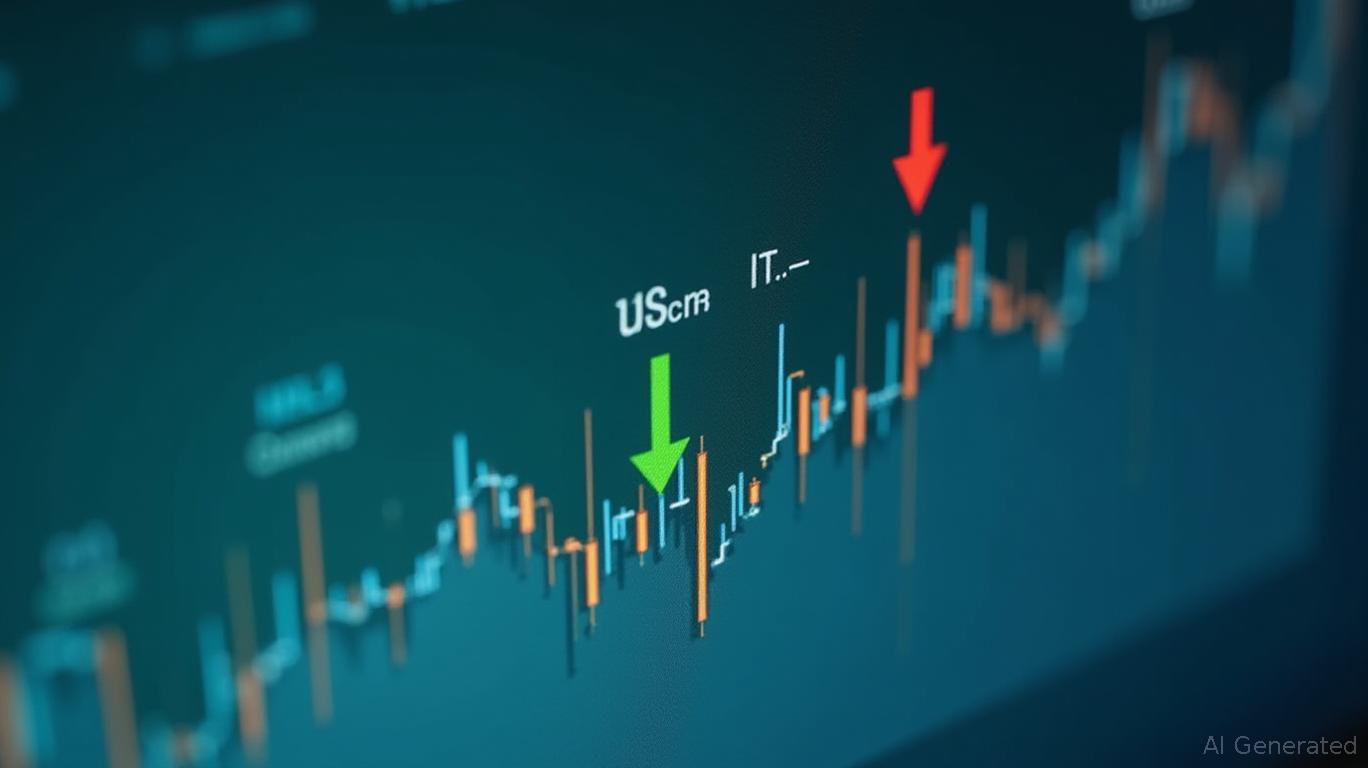Webster Financial (WBS): A Resilient Regional Bank Navigating Macroeconomic Headwinds
Webster Financial (WBS) has positioned itself as a regional banking powerhouse, leveraging disciplined credit policies, robust core deposits, and strategic technology investments to weather economic uncertainty. As the U.S. economy braces for potential recessionary pressures, WBS's Q1 2025 results reveal both strengths and vulnerabilities, but the balance tilts toward a compelling investment case for long-term stability. Here's why
deserves consideration as a “buy” or “hold” in today's volatile market.Core Deposit Strength: A Foundation for Resilience

Webster's deposit franchise is its crown jewel. Total deposits grew to $65.6 billion in Q1 2025, with core deposits accounting for 88.5% of the total, up from 87.3% in Q4 2024. This stability is driven by Healthcare Financial Services, where deposits surged 8.1% year-over-year to $10.2 billion. The HSA Bank and Ametros divisions, which manage health savings and emergency savings accounts, are key growth engines. These products are low-cost, sticky, and recession-resistant, as healthcare spending remains a necessity.
The bank's Consumer Banking segment also performed well, with deposits rising 3.3% to $27.8 billion, fueled by digital platform enhancements like mobile banking and BrioDirect. Management emphasized that these efforts have strengthened the “funding franchise,” reducing reliance on volatile wholesale deposits. This is critical: a strong deposit base insulates WBS from rising interest rates and liquidity crunches, which regional banks often face in downturns.
Loan Quality: Navigating Sector-Specific Risks
While WBS's credit metrics have deteriorated slightly—non-performing loans (NPLs) rose to 1.06% of total loans in Q1 2025—management has been transparent about the drivers. The increase is concentrated in two sectors: healthcare and office commercial real estate, which together represent a small portion of the loan book but have seen heightened stress due to delayed tenant decisions and sector-specific challenges.
Importantly, excluding these sectors, credit metrics remain healthy. Management has prioritized resolving these problem assets, and the allowance for credit losses (ACL) now stands at 1.34% of total loans, up from 1.31% in Q4 2024. This conservative provisioning reflects heightened recession probability assumptions (now 30% in its models), ensuring WBS is prepared for a potential downturn.
The bank's efficiency ratio of 45.79%—below its 50% target—also underscores its cost discipline. Even as it invests in technology upgrades, WBS maintains flexibility to cut discretionary spending if conditions worsen.
Technology Investments: A Long-Term Differentiator
Webster is investing aggressively in cloud-native infrastructure, including a new general ledger system, to meet regulatory requirements as it approaches the $100 billion asset threshold. These upgrades are not just defensive; they position WBS to scale efficiently in a post-pandemic era where digital banking and compliance are non-negotiable.
The payoff is evident:
- Healthcare Financial Services uses proprietary tech to streamline medical claim settlements.
- Commercial Banking benefits from enhanced underwriting tools, boosting loan origination quality.
- Consumer Banking leverages mobile-first platforms to attract younger, tech-savvy customers.
These investments should reduce operational risk and improve cross-selling opportunities, reinforcing WBS's competitive edge.
Near-Term Headwinds: Recessionary Provisions and NPA Resolution
The risks are clear. Elevated NPLs in healthcare and office CRE sectors could pressure earnings if resolutions take longer than expected. Meanwhile, the $77.5 million provision for credit losses in Q1 2025—up 22% sequentially—compresses near-term profits.
Share repurchases, which totaled 3.6 million shares in Q1, may also slow if management prioritizes capital preservation. Investors should monitor whether the CET1 ratio (currently 11.26%) remains robust enough to withstand stress scenarios without dilution.
Investment Thesis: A Hold-to-Buy with an Attractive Risk-Return Profile
WBS's valuation is reasonable at current levels. With a P/B ratio of 1.2x (below its 5-year average of 1.4x), the stock offers a margin of safety. The dividend yield of 2.8% adds a defensive layer, and the bank's balance sheet—clean beyond sector-specific NPLs—supports long-term growth.
The catalysts are aligned for success:
1. NPA Resolution: Progress in winding down healthcare and office CRE loans will alleviate overhang.
2. Deposit Growth Momentum: HSA products and digital platforms should sustain core deposits.
3. Regulatory Preparedness: Cloud-native tech investments will allow WBS to scale efficiently as it nears $100 billion in assets.
Historically, a short-term strategy of buying on earnings announcement dates and holding for 30 days underperformed significantly, yielding a CAGR of 6.66% with a maximum drawdown of -50.65%. This underscores the risks of short-term trading and reinforces the need for a long-term perspective to capture WBS's fundamentals.
Final Take
Webster Financial is a regional bank that has navigated macroeconomic uncertainty with discipline. While sector-specific NPLs and elevated provisions pose near-term hurdles, the deposit franchise, strong capital ratios, and strategic tech investments position WBS to outperform peers in a downturn. For investors seeking stability in financials, WBS is a hold-to-buy at current prices, offering a blend of defensive traits and growth potential.

Risk Rating: Moderate
Price Target: $58–$62 by end of 2025, assuming stable macro conditions.
Investment Call: Buy with a 12–18 month horizon.

Comments
No comments yet